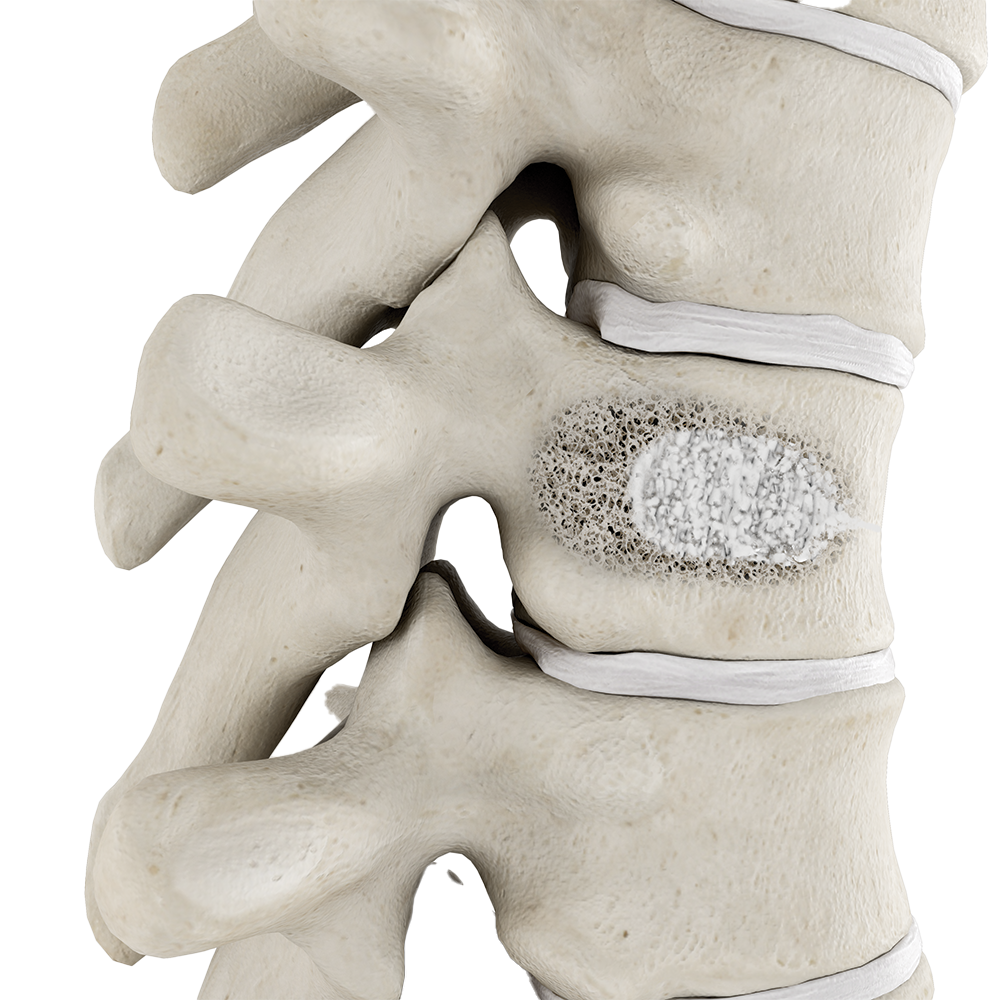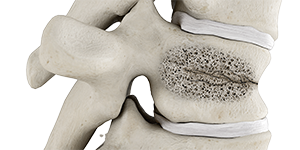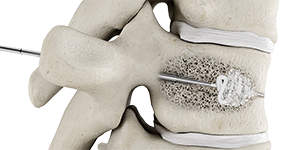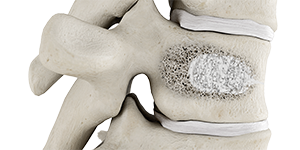
Vertebroplasty
Pain relief may be closer than you think
Vertebroplasty is a well-established treatment of vertebral compression fractures (VCFs). Over a decade of clinical studies have demonstrated positive outcomes for patients.12345
Why consider vertebroplasty treatment?
Vertebroplasty includes use of an acrylic bone cement that is injected into the fractured vertebra to stabilize and strengthen it and to relieve pain.
What to expect with vertebroplasty
View the step-by-step procedure

Before the procedure
A doctor will do a physical exam and order x-rays and/or other imaging tests such as an MRI, CT or bone scan. These tests help determine the location of the fractured vertebra, how recently it occurred and whether vertebroplasty is the most appropriate treatment. Note: If you are pregnant, please tell the doctor before undergoing vertebroplasty.

During the procedure
Generally, vertebroplasty is performed while you are awake but sedated; your back is numbed by a local anesthetic. Using x-ray guidance, a needle is inserted into the fractured vertebra through a small incision. The vertebra is filled with bone cement to stabilize the fracture. As it hardens, the cement forms an internal cast that holds the vertebra in place. The incision is covered with a bandage.

After the procedure
You will lie on your back for a short period of time while the cement continues to harden. Vital signs are monitored. Typically, you can go home within a few hours of treatment. If you notice any signs of wound infection, bleeding or hematoma, you should contact your healthcare provider immediately.

